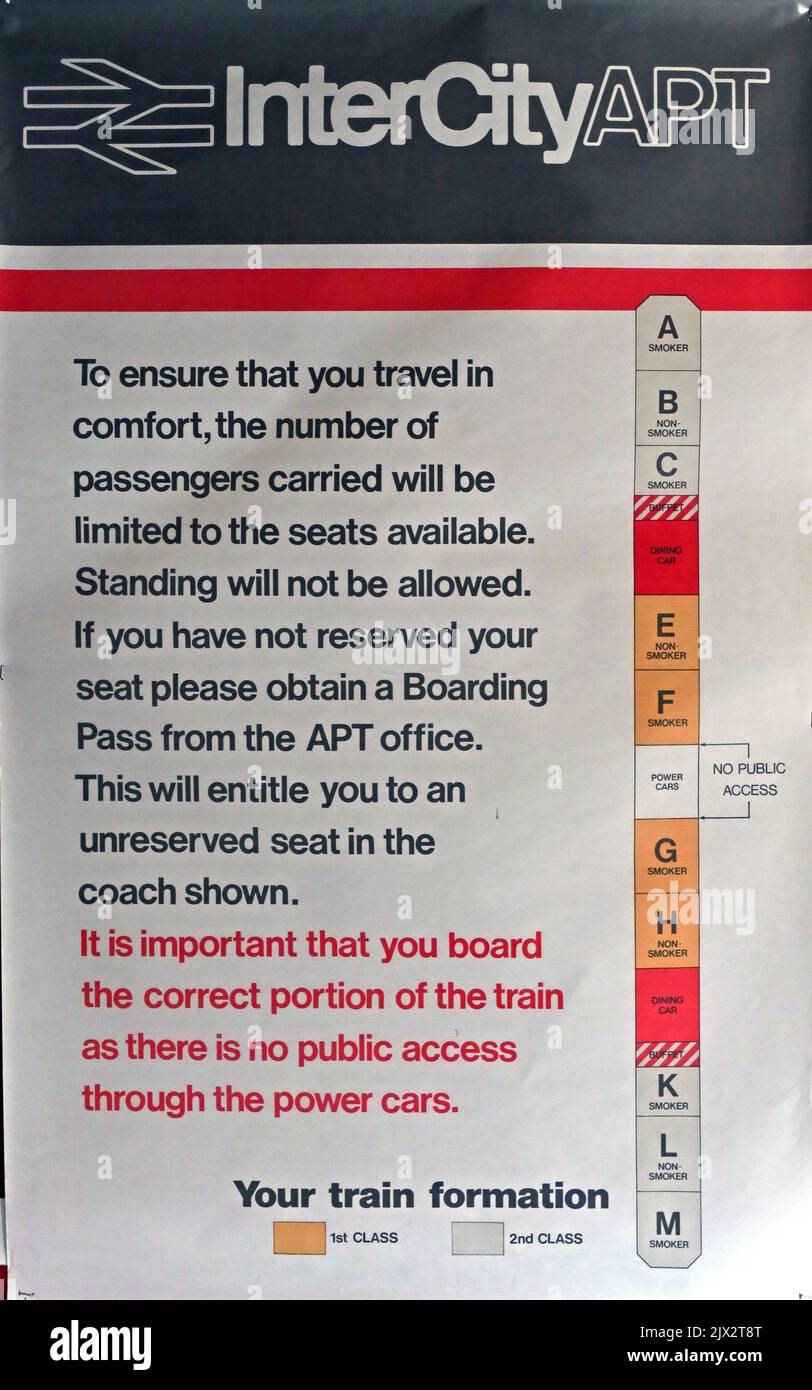Layout poster of British Rail APT,BREL and British Rail Research Division Advanced Passenger Train prototype 370006 at Crewe,Cheshire,England,UK

Image details
Contributor:
Tony Smith / Alamy Stock PhotoImage ID:
2JX2T8TFile size:
42.3 MB (1.7 MB Compressed download)Releases:
Model - no | Property - noDo I need a release?Dimensions:
3040 x 4864 px | 25.7 x 41.2 cm | 10.1 x 16.2 inches | 300dpiDate taken:
3 September 2022Location:
Crewe Heritage Centre, Vernon Way,Crewe,Cheshire,England,UK, CW1 2DBMore information:
The Advanced Passenger Train (APT) was a tilting high speed train developed by British Rail during the 1970s and early 1980s, for use on the West Coast Main Line (WCML). The WCML contained many curves, and the APT pioneered the concept of active tilting to address these, a feature that has since been copied on designs around the world. The experimental APT-E achieved a new British railway speed record on 10 August 1975 when it reached 152.3 miles per hour (245.1 km/h), only to be bested by the service prototype APT-P at 162.2 miles per hour (261.0 km/h) in December 1979, a record that stood until September 2006. Development of the service prototypes dragged on, and by the late 1970s the design had been under construction for a decade and the trains were still not ready for service. The election of Margaret Thatcher brought matters to a head and she alluded to funding cuts for the project. Facing the possibility of cancellation, BR management decided to put the prototypes into service, with the first runs along the London-Glasgow route taking place in December 1981. The result was a media circus when every problem large or small received front-page coverage and the entire project derided as an example of BR's incompetence. The trains were withdrawn from service again by the end of the month, to the great amusement of the press. In spite of the APT's troubled history, the design was highly influential and directly inspired other high speed trains such as the Pendolino. The considerable work on electrification that was carried out hand-in-hand with APT was put to good use with newer non-tilting designs like the British Rail Class 91. The APT's tilt system was returned to the WCML on the British Rail Class 390, based on the Fiat Ferroviaria tilting train design and built by Alstom.